3p Weekend: What’s the Carbon Footprint of Your Veggie Burger?


Quorn, a United Kingdom-based meat alternative company that dates back to 1985, will launch a carbon labeling system to help consumers understand the full lifecycle of every product. The new labels featuring carbon footprint data will start appearing on some packaging in June and on all of the company’s products by next year, news outlets including the Guardian report.
Quorn describes itself as the first food company to have its farm-to-shop carbon “foodprint” data independently certified by the Carbon Trust.
An industry first? The roller-coaster ride for adding carbon footprint information to food labels
But Quorn is not the first company to work with the Carbon Trust to establish such metrics.
Tesco, a British multinational supermarket chain, as well as the Coca-Cola Co., both began working with the Carbon Trust over a decade ago. Tesco first put carbon labels on products such as milk and orange juice in 2007. But five years later, the company dropped its pledge, claiming the amount of work involved was too much and that other supermarkets declined to do the same.
In 2007, Coca-Cola’s U.K. division was among a group of nine companies to pilot the Carbon Trust’s draft product carbon footprint disclosure standard. For now, the beverage giant discloses carbon footprint data on its website but not on cans, as they are “already crammed with information,” the company told the U.K. news daily Telegraph.
Now, there is a resurgence in appetite for this type of data and transparency. As pressures mount for the food and beverage industry to tackle climate change and cut greenhouse gas emissions, steps like carbon labeling can help to educate consumers about the resources, including fuel and water, needed to produce food products.
As a purveyor of meat alternatives, Quorn has a unique foothold within the food industry. And unlike concerns over other plant-based protein products, which contain ingredients eyebrow-raising to some like soy and coconut oil, all Quorn products are based in mycoprotein, which is derived from a fungus and grown by fermentation.
The carbon footprint from animal products is staggering
According to data compiled by Quorn:
-
Raising livestock generates 14.5 percent of global emissions, the second highest source after energy production.
-
More than half of all food-related emissions come directly from animal products.
-
Livestock farming uses a staggering 70 percent of agricultural land. It’s one of the leading causes of deforestation, biodiversity loss and water pollution.
Additional data from the Organization for Economic Co-operation and Development (OECD) shows that global meat consumption continues to rise. And, compared to other commodities, meat has much higher production costs as well as significant environmental and health consequences.
Even while the plant-based food sector reached an estimated market value of more than $4.5 billion in 2019 and continues to disrupt the industry, the global meat sector is expected to climb to over $1 trillion within the next few years.
The long, winding road to carbon labeling for consumers
To help consumers make more informed decisions and create a competitive advantage, more food and beverage companies are pursuing ways to incorporate carbon footprint data. Companies like Nestlé and Premier Foods have begun exploring carbon labeling as a way to inform consumers about the environmental impacts their products have.
Carbon emissions data is a challenge many companies are starting to examine in order to increase efficiency and quench new consumers’ demand for transparency and accountability. This vote-with-your-dollars attitude from consumers has only just begun.
What Quorn has announced is monumental. Hopefully this time around it won’t take another decade for a greater number of food and beverage companies to launch carbon labeling. Going further, perhaps the broader consumer goods industry will shift to make carbon emissions data more relevant, transparent and prevalent.
Information is key to inspiring healthier choices—for both producers and consumers. Innovative, informative labeling just might help us find a more suitable diet for a warming planet that is getting hotter by the day.
Left Behind: Older Employees Feel Unwelcome in Corporate America


In case you missed it, more and more baby boomers are reaching retirement age. Economists have forecasted (and some have dreaded) this era for decades, but surprisingly, many boomers are choosing to stay in the workforce. And employers within corporate America may not always feel happy about it.
Workers in their 50s, 60s and 70s are not just the workforce of the past. According to recent research, they are part of the future, too. People aged 55 and older make up about 25 percent of the current U.S. workforce, according to the Bureau of Labor Statistics—and 85 percent of baby boomers plan to keep working into their 70s or even 80s. But many of those workers find they are no longer welcome at their jobs after reaching a certain age.
The number of people aged 65 and older will increase almost two-fold from 48 million to 88 million by 2050, according to the U.S. Census Bureau. Instead of preparing for an influx of older employees with long track records of work and training, some employers are encouraging, or forcing, older workers to retire.
Age discrimination is still a problem for employees, their families and the economy
Just ask 69-year-old Paul Ewart, an Oxford University professor who says he was fired because of his age. Ewart worked at the college for 38 years and was the former head of atomic and laser physics before being shown the door. Now, Ewart may obtain nearly $200,000 in back pay as compensation for lost income since being forced to quit in 2017.
Age discrimination is endemic on this side of the pond as well—and it can start far earlier than you may expect. A 2018 AARP survey found that almost 1 in 4 workers age 45 and older say they've endured negative comments about their age from either supervisors or coworkers. Two out of 3 respondents reported experiencing age discrimination in some form. And more than 3 in 4 found age discrimination to be a hurdle in finding a new job.
“Age discrimination remains a significant and costly problem for workers, their families and our economy," investigative journalist Joe Kita concluded in an AARP special report published in December.
Unfortunately, many employers believe that higher costs are associated with older workers, including more money spent on healthcare. And just like that, discrimination in the workplace becomes a reality that more people face as they age. Indeed, sexism and racism are hot topics in the news every day, but ageism is a growing diversity and inclusion issue that continues to be swept under the rug—and these workers, along with their families, are suffering as a result.
Pushing older Americans out of the workforce is short-sighted
“Older workers are a valued resource that too often are falling under the radar,” TriplePundit’s Leon Kaye observed last year. Many employers, however, are still not getting the memo.
“Unfortunately, age discrimination seems to be the one form of bias that is still acceptable,” Susan Weinstock, vice president of financial resilience programming for the AARP, said in a statement. “But employers who push out their experienced workers do so to their detriment.”
Weinstock and the AARP point to qualities and skills that older workers have honed and which employers value, including loyalty, productivity, motivation, the ability to work under pressure, leadership, problem-solving, commitment to their work and experience.
Corporate America is excluding older workers from D&I strategies
Still, 2019 research from PwC indicates that only 8 percent of companies include age in their diversity and inclusion strategies, leaving the door open for ageism and age discrimination.
Experts including author Bonnie Marcus, who is writing a book about women over 50 in the workplace, point to this gap as a clear hypocrisy within the diversity and inclusion (D&I) conversation, and understandably so. Older workers helped shape the modern workforce. They innovated, dreamed and toiled to pave the way for the digital age.
Furthermore, these workers are more innovative than we give them credit for: A quarter of U.S. entrepreneurs are in the 55 to 64 age bracket, and almost 40 percent of people who start new businesses are in that age group, according to ongoing research by the Ewing Marion Kauffman Foundation.
Instead of sending them away, employers would be wise to welcome and appreciate older, “seasoned” or “mature” workers as the “valued resource” they are and have been to the labor market. Let the days of watching sunsets on the porch wait—the sun has not yet gone down on many of today’s older workers.
Image credit: Maria Lupan/Unsplash
5 Pharmaceutical Giants, Gates Foundation Expand Healthcare Access to 1.7 Million in Africa


Today, the Bill & Melinda Gates Foundation and five pharmaceutical companies—Novartis, Johnson & Johnson, Lilly, Pfizer and GSK—together announced an initiative to train more community health workers and expand healthcare access to 1.7 million people across six nations in Africa.
Two NGOs, Living Goods and Last Mile Health, will run the program. The five pharmaceutical giants and Gates Foundation will contribute a combined $18 million over the next three years to make the project possible.
So, why does this project matter? While many regions worldwide report shortages of medical professionals such as doctors, nurses and dentists, the reality is that community health workers are critical for the delivery of healthcare services in much of the world. They are integral to helping patients gain access to dental care in rural America, and armed with little more than a cell phone, they can deliver frontline medical care and information to citizens in India.
Many of these community health workers, who often volunteer their time and knowledge, can gain the trust and confidence of locals in a way that someone wearing a white jacket or scrubs cannot. And at a time when many municipalities cannot afford the cost of a clinic or even a traveling medical professional, these community health workers are often a valuable lifeline, whether they are distributing medicines or sharing information about prenatal care.
“Community health workers are the critical frontline to sustainably impact the health of communities in resource poor settings,” said Vas Narasimhan, CEO of Novartis, in a public statement. “Novartis is committed to strengthening healthcare systems and is proud to be part of this coalition to use digital technologies to reimagine the future of community health delivery.”
Technology is key for this initiative to succeed. Each of the five companies involved say they can contribute unique expertise to help drive health technology innovation and deepen impact in Liberia, Kenya, Uganda and Malawi. (The other two countries benefiting from this project have yet to be named.) In addition to financial contributions, these companies say they will contribute disease-specific expertise and experience to supplement the community health models that Last Mile Health and Living Goods have fine-tuned over the years.
All of these companies have been involved in healthcare projects across Africa to some degree. Eli Lilly has launched technology transfer programs in Africa. Novartis has harnessed digital technology to help provide more medicines across the continent. GSK launched an “open R&D lab” and has endowed university chairs within the region. Pfizer says it's accelerating technology transfers and skills upgrades to increase Africa’s vaccine output. J&J’s NurseConnect provides messaging, a mobile learning platform, and a help desk for nurses and midwives in South Africa’s public health system. And, of course, the Gates Foundation has a long history of funding healthcare programs across much of Africa.
“[By] offering informative digital solutions for users while also driving greater investment in targeted health care provision—helping to train frontline health workers to meet the needs of the local population—global health actors can create delivery systems across the world that are cost-efficient enough to be scalable, but bring enough face-to-face engagement to be life changing,” J&J’s Lauren Moore wrote on TriplePundit last year.
The overarching goal of this multi-stakeholder health project is to bolster these six countries’ community health worker programs for the long term. Living Goods and Last Mile Health have a successful history in working with governments to train, equip and support digitally-empowered community health workers. Should this project thrive, the curricula and tools developed through this multimillion-dollar investment could ensure community health workers’ confidence and performance for many years to come.
Image credit: Last Mile Health/Facebook
BlackRock CEO Calls For Climate Action: Will the Company Follow Through?
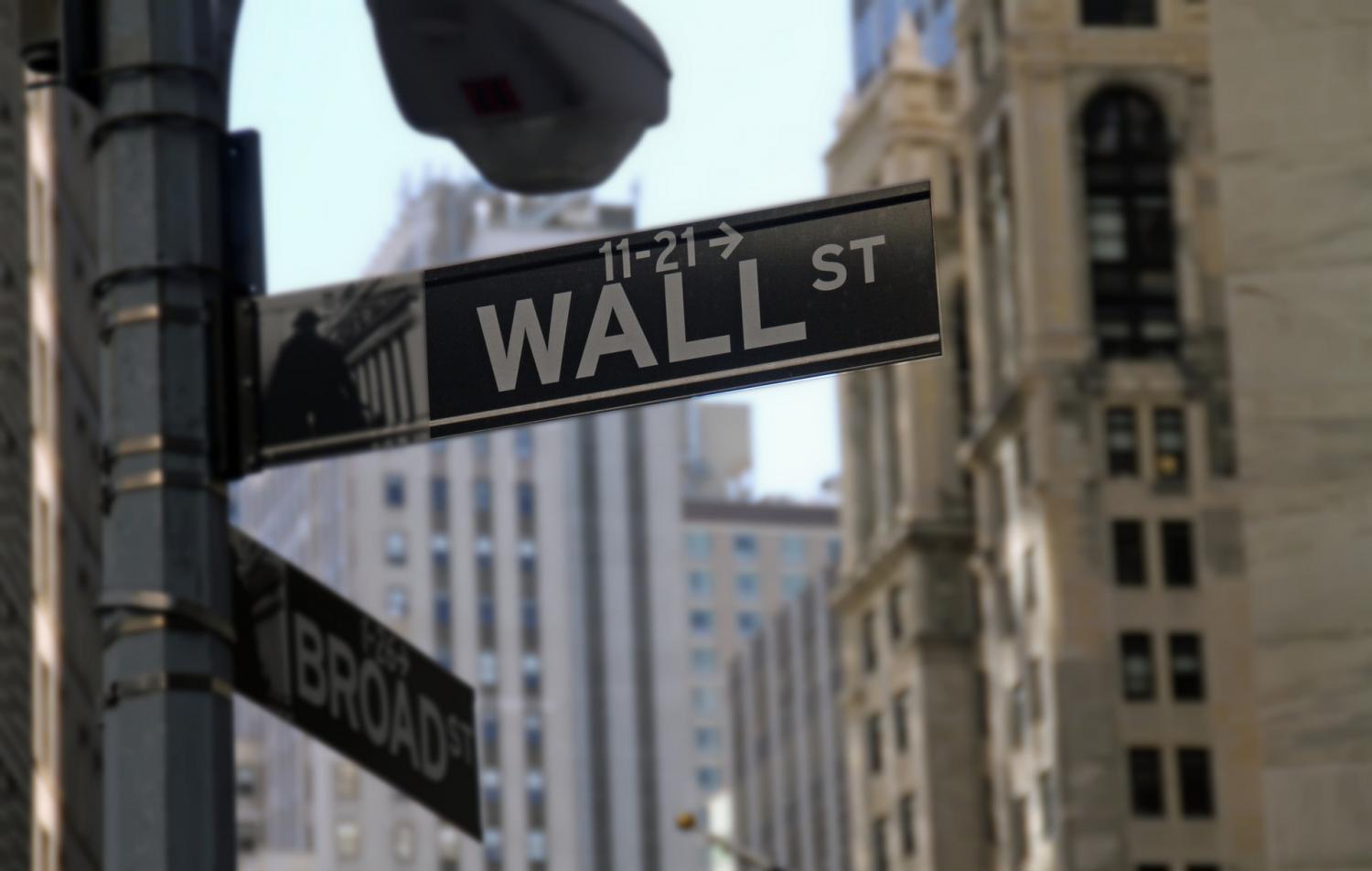
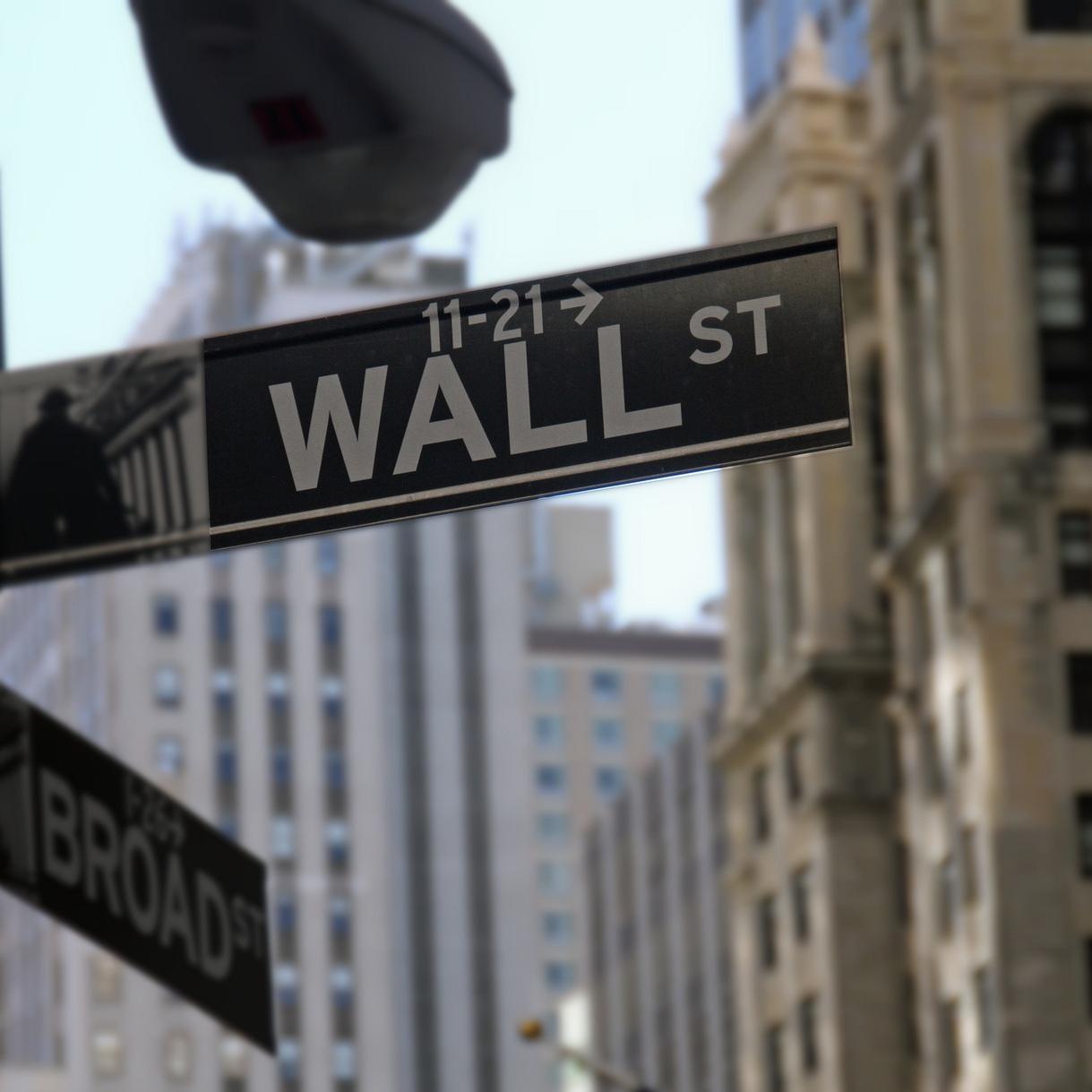
BlackRock CEO Larry Fink made a powerful bottom-line case for climate action on this week in his annual public letter to corporations. Fink has talked a good game on climate change in the recent past, but critics have alleged that BlackRock has failed to follow through — and some environmental groups reacted with skepticism to Fink's latest letter.
This time, however, the annual letter is freighted with action steps, and at least one organization has charted out the targets that BlackRock will need to hit in order to make good on Fink’s word.
BlackRock, climate action and the “ultimate long-term problem”
As the world’s largest asset manager, BlackRock has the power to move markets and influence corporate boards of directors.
The problem for climate activists is that, until now, BlackRock has exercised that power with excessive caution.
Nevertheless, Fink’s 2020 letter could be the harbinger of a change in the game.
In previous annual letters, Fink has cast social responsibility as a bottom-line fiduciary obligation rather than moral window-dressing. This view requires that corporations seek long-term solutions to persistent problems rather than solely chasing after short-term gains.
The new letter builds on that view by casting climate change as the biggest long-term problem faced by asset managers today.
Fink argues that global infrastructure, especially in cities, has been built without accounting for the reality of climate impacts.
“We are facing the ultimate long-term problem,” he writes. “We don’t yet know which predictions about the climate will be most accurate, nor what effects we have failed to consider. But there is no denying the direction we are heading. Every government, company and shareholder must confront climate change.”
Adding up the score on climate action
This may sound like bluster, considering BlackRock’s prior track record.
However, at least one strong critic of BlackRock’s past practices, the Institute for Energy Economics and Financial Analysis (IEEFA), sees a clear road map for change in Fink’s letter.
IEEFA’s research indicates that companies taking a first step on climate change almost always continue to add action. So, while the new letter may not draw the full picture, it does indicate a strong start.
That strength of that start is embodied in BlackRock’s pledge to divest from any coal mining firm that generates more than 25 percent of its revenue from thermal coal.
Thermal refers to coal for power generation and other energy-related uses. Metallurgical coal will continue to be acceptable under the BlackRock plan, but the consequences will still be catastrophic for the global coal industry.
IEEFA lists Peabody Energy, Arch Coal, Inc., and CONSOL Coal in the U.S., and a score of other leading coal companies around the world, that are up for review and likely divestment under the new plan.
Companies targeted by climate action
That’s just step one of a three-part plan.
After prioritizing coal mining companies, BlackRock plans to take a hard look at coal consumers. To that end, IEEFA lists Duke Energy and Southern Company among other utilities and energy providers impacted by the review.
The third round will cover companies that provide infrastructure and other services in support of thermal coal.
From baby steps to leaps and bounds on climate action
On the downside, the new BlackRock divestment plan only impacts funds under active management. As the World Resources Institute and other environmental organizations have pointed out, BlackRock could do more in that area.
Still, the technology for achieving decarbonization is well in hand. What is needed now is acceleration. Even if BlackRock is only focusing on its active funds, the impact could be swift and dramatic.
For example, Duke Energy and Southern Company are vulnerable to divestment under the new BlackRock plan, even though they are among the U.S. firms transitioning into renewables.
To accelerate their renewable energy commitments — and prevent divestment - IEEFA recommends that they look to guidance from another U.S. company, Nextera Energy, or to France’s ENGIE and Italy’s ENEL.
All three of these companies have demonstrated that rapid decarbonization is both doable and financially advantageous.
Political implications in the U.S.
It will be interesting to see how the Fink letter plays out against the Trump administration’s latest move to slow the pace of decarbonization.
The administration has previously attempted to prop up the U.S. thermal coal industry by invoking its authority through the Department of Energy and the Federal Energy Regulatory Commission, to little avail.
Last week, just days before the Fink letter emerged, the administration formally proposed rolling back climate-related provisions in the National Environmental Policy Act (NEPA).
If enacted, the NEPA proposal would have the effect of digging the U.S. deeper into the infrastructure risk hole described by Fink.
That “if” is becoming more distant by the hour. The proposal is all but certain to be challenged in the court of law, and the new Fink letter virtually guarantees that it will not survive in the court of fiduciary responsibility, either.
Image credit: Tumisu/Pixabay
Who Are the Millennials Driving Sustainable Growth?


If you've been following the research about generational spending and lifestyle habits, you know that millennials are a vastly different kind of consumer group when compared with other generations. Millennials are some of the most likely to take a brand's commitment to sustainability and social impact into account when making decisions.
However, millennials aren't a monolith—some are driving the move toward sustainable consumption a lot more than others.
Below, we'll cover the millennials who are turning to green living and how they may affect investing that considers environmental, social and governance (ESG) factors.
Which millennials are spending with a conscience?
There are ways to divide millennials into groups that show which ones are driving sustainable growth with their purchases.
One researcher, Jason Dorsey, an expert who often speaks about this generation and how they spend their money, recently told Business Insider that he divides them into two categories: me-llennials and mega-llennials. While both fall under the millennial umbrella — born between 1981 and 1996 and now aged 24 to 39 — the two have very different spending habits and experience sets.
The first group, the me-llennials, fell behind during the recession. They identify more with the struggles that typify reporting on millennials — lower incomes, less spending power and high debt.
They're also typically behind in their professional careers, meaning they may struggle with trying to boost their incomes and pull themselves out of debt. Like all millennials, they're likely to have a variety of skills but less consistent experience, in part because they often pursue their own unique navigation of the job market.
The second group, by comparison, is doing a lot better and does not identify as much with the struggles traditionally associated with millennials. These mega-llennials tend to be financially secure, are advancing in their fields and aren't holding on to high levels of debt.
This two-set grouping is supported by income data. The average millennial made around $35,500 per year in 2018, less than the living wage in some cities, according to estimates from SmartAsset. But not all millennials are struggling, the financial technology firm noted: Some of the highest-earning millennials reported incomes of more than $180,000 in 2018.
This leaves some money to spend on sustainable goods, which are still often priced higher than conventional products on the market.
How can millennials drive sustainable living and investing?
Sustainability and luxury aren't quite synonyms, but there is a surprising overlap between the two.
Luxury retailers are some of the biggest adopters of sustainable practices and branding, in part because they can pass on the higher costs of eco-friendly manufacturing to their customers.
Millennial spending habits and income distribution will likely make ESG investing a sounder strategy, but only in certain cases. Companies selling luxury goods — or brands targeting demographics with cash to spare — will probably do the best when introducing sustainable products and be more likely to benefit from interested buyers.
While most evidence suggests that the vast majority of millennials want to shop sustainably — 73 percent of them are willing to spend more to buy from eco-friendly brands — not all have the money to get what they want.
Cash-strapped millennials, even if they are personally committed to sustainability in their daily lives, often can't afford the markup. Instead, they turn to other ways to make their lives more eco-friendly — like do-it-yourself projects, recycling and thrifting.
Companies targeting sustainability-minded consumers with less cash may only be successful if they keep in mind how much money their target audience has on hand.
Millennials are driving sustainable growth, to a point
Millennials are some of the biggest drivers of sustainable growth. But wide income distribution leaves some with a lot more cash on hand than others. This means that while sustainability can be a good strategy for brand growth, it may not always work depending on a company’s target demographics.
Luxury brands and companies that target wealthy millennials are likely to do the best because they'll be more able to pass on the costs of eco-friendliness to their customers without risk to their business.
As a result, ESG investment strategies can be successful, but only if they take into account the income distribution of millennials.
Image credit: Borko Manigoda/Pexels
Discover the New Purpose of Business: Social Responsibility


In an age in which consumers are digitally connected, desires are met with a mere click of a button. Humanity is learning the consequences of optimizing output without social responsibility, and the way we capitalize may need to undergo a transformational change.
“It is not from the benevolence of the butcher, the brewer, or the baker, that we expect our dinner, but from their regard to their own interest. We address ourselves, not to their humanity but to their self-love, and never talk to them of our necessities but of their advantages.” Adam Smith effortlessly defines the root of capitalism and its economic power.
But to what extent should a business self-love to generate profit? The state, nation, and world have changed significantly since the Wealth of Nations was written in 1776. Today, businesses are at the mercy of consumers. “Conscious capitalism,” a term coined by Whole Foods CEO John Mackey in his 2013 book Conscious Capitalism: Liberating the Heroic Spirit of Business, has never been more important.
Consumers in the 21st century are increasingly trending towards ethical consumerism and rely less on brands and more on what the company stands for. In the early 2000s, ethically positioned businesses were considered a niche market. Today, conscious consumerism is synonymous with responsible business and is increasing demand for businesses that operate with the aim to achieve a triple bottom line: social, environmental and financial success.
Consumers now demand capitalism to serve not only stakeholders but society and assist in finding solutions to today’s wicked problems. As the gap between the uber-rich and working poor continues to widen, younger generations are strongly reacting against “the system.” A 2018 Gallup poll found that 45 percent of U.S. respondents viewed capitalism positively, a 23 percent decrease from the 2010 poll.
Fighting against “the system” was very prevalent in 2019. Several Fortune 500 companies were forced to listen to their customers and question how their business model could shift to not only maximizing shareholder value but also have a positive social impact. As consumer trust becomes frail and public interest for corporate responsibility increases, businesses are struggling to address the new set of challenges ahead of them.
It’s not just consumers that are driving this seismic change in corporate perspective. Investors are increasingly adding pressure to boards and managers to behave more responsibly. Socially responsible or ESG (environmental social and governance) investment has swelled to over $9 trillion of assets under management. Just as significant, Lawrence Fink, CEO of Blackrock, the world’s largest asset manager has publicly exhorted CEOs of publicly traded companies to commit to social purpose or risk losing investment.
The influential Business Roundtable’s (BRT) decision to redefine the Purpose of a Corporation to serve a variety of stakeholders beyond shareholders seems an obvious yet extremely significant response to these increased pressures. It represents a giant leap in helping find feasible solutions for the interconnected challenges nested within the capitalist world we have built. Executives constantly ask me how to address competing obligations (i.e. growth vs. social responsibility, or customers vs. employees) successfully. The answer lies within the SEER model -- the “both/and” approach. Businesses can compete yet find interconnect values and objectives within the inherent tensions between the goals. Firms must look at the interconnected values and objectives as the key to unlocking creativity and novel solutions, not as a trade-off or an easy “win-win” strategy.
Managers seeking to transform their business into a conscious capitalism business can start with four basic steps.
Seek to unwrap a higher purpose. Your business should aim to do more than making a profit. Executives should question what the company’s mission is and what they provide to customers beyond the service or product they are purchasing. Don’t forget, businesses exist to solve problems and improve lives.
Create and establish a conscious culture. This step begins at the top with a conscious leader. Regardless of the organization size or number of employees, the organization must practice a value-based culture. The 2016 Cone Communications Millennial Employee Engagement Study revealed 64 percent of millennials will not take a job if a company doesn’t have strong corporate social responsibility values and 83 percent would be more loyal to a company that helps contribute to social and environmental issues.
Explore the “new” stakeholder centric purpose. A business that solely focuses on shareholders will have short-term success. But a business that understands the importance of all stakeholders -- employees, customers, community, environment -- reap the economic and social rewards of doing good.
Expand the definition of conscious capitalism. Beyond emulating a few standout companies like Patagonia and Ben & Jerry’s that fully embrace the spirit of conscious capitalism, business should find novel ways of defining success in creating positive impact.
Teaching the butcher, the brewer, and the baker to operate a conscious capitalist business doesn’t mean minimizing profit; rather, it means maximizing value creation for all material stakeholders. If capitalism is to survive this century, it must be redefined to prioritize the self-love of all stakeholders and include an imperative to help society and our planet flourish.
Image credit: Nitish Meena/Unsplash
BlackRock Signals a More Aggressive Stand on Climate Action


The financial firepower lined up in favor of climate action took a quantum leap forward last week when the global investor group Climate Action 100+ announced the addition of BlackRock to its roster. BlackRock alone manages $6.8 trillion in assets, and this move boosts the cumulative total of the group past the $41 trillion mark.
That $41 trillion number is especially significant in light of the Donald Trump administration’s proposal to roll back climate-related provisions in NEPA, the National Environmental Policy Act. As justification, the administration claimed the move would stimulate “more than a trillion dollars” in private-sector investment in U.S. infrastructure.
But that’s a drop in the bucket compared to the climate-oriented investment potential under the guidance of Climate Action 100+.
Prioritizing corporate targets for climate action
Climate Action 100+ launched at the One Planet Summit in 2017 with the goal of pressing the world’s largest corporate greenhouse gas emitters to take meaningful action on climate change.
The companies targeted by Climate Action 100+ consists of 100 “systemically important emitters,” which cumulatively account for two-thirds of annual industrial emissions globally. In addition, 61 other members are described as having a “significant opportunity to drive the clean energy transition.”
As may be expected, the focus companies are mainly located in Europe (34.8 percent), North America (33.5 percent), and Asia (19.9 percent). The focus sectors also fall neatly into the expected categories, topped by oil and gas (24.8 percent), utilities and power producers (19.3 percent), transportation (16.1 percent), and mining and metals (14.3 percent).
Together, the 161 focus companies reflect that breakdown, with many familiar names in the fossil fuel sector, as well as the energy supply and automotive industries.
The list also demonstrates that companies with fairly impressive track records on clean power still have substantial opportunities for future decarbonization. Coca-Cola, Unilever and Walmart, for example, are all in the group of 61 additional companies that observers say have room to improve.
Climate Action 100+ pushes back on NEPA rollback
In what appears to be a coincidence of timing, Climate Action 100+ announced the addition of BlackRock on January 9, the same day President Trump formally proposed rolling back climate-related provisions in NEPA.
Coincidental though it may be, the Climate Action 100+ announcement reads like a direct rebuke of the NEPA proposal.
“Company boards should be under no illusion of the need to take action on climate change and reduce their emissions,” Stephanie Pfeifer, member of the Climate Action 100+ steering committee and CEO of the Institutional Investors Group on Climate Change, said in a press statement.
“BlackRock joins over 370 other investors already involved in the initiative putting pressure on companies to commit to a net-zero future and address climate risks,” she added.
BlackRock raises the bar on climate action
As the world’s single largest asset manager, BlackRock wields an outsized influence on the ability of private-sector influencers to accelerate action on climate change. The company’s $6.8 trillion in assets under management surpasses the GDP of every nation on Earth, with the exception of the U.S. ($22.3 trillion) and China ($15.2 trillion).
Climate Action 100+ bases its member commitment on the 2014-2015 Global Investor Statement on Climate Change, a document that aligns with the goals of the 2015 Paris climate agreement.
With its commitment to Climate Action 100+, BlackRock says it will press boards and senior management to create a corporate governance framework based on disclosure and accountability regarding greenhouse gas emissions, as well as climate change risks and opportunities.
New direction for BlackRock, new hope for quashing the NEPA rollback
That certainly does not sound like an open call for companies to pursue infrastructure projects in the U.S. willy-nilly without regard for climate impacts, as envisioned by the proposed NEPA rollback.
Indeed, in his newly issued annual letter to corporate executives, BlackRock CEO Larry Fink wrote that “climate change has become a defining factor in companies’ long-term prospects.”
“Investors are increasingly reckoning with these questions and recognizing that climate risk is investment risk,” he added.
In direct opposition to the justification for the proposed NEPA rollback, Fink emphasized the need to build climate resiliency into infrastructure projects.
He also said he plans to deploy BlackRock’s voting power in the effort: “Where we feel companies and boards are not producing effective sustainability disclosures or implementing frameworks for managing these issues, we will hold board members accountable."
What’s next for BlackRock
Fink pledged that BlackRock would stop holding shares in companies with more than 25 percent of their revenue in thermal coal, while substantially expanding its roster of sustainability-oriented investments.
Although the new investment plan only covers assets under active management, it has game-changing potential. BlackRock has been previously cited for losses related to fossil fuel companies in its passive fund holdings, but the new plan could ripple out to hit those companies as well.
Signs of change in the passive sphere are already apparent. According to one study issued last summer, just four companies — ExxonMobil, Chevron, Royal Dutch Shell and BP — accounted for three-quarters of BlackRock's losses related to passive funds over a 10-year period.
ExxonMobil is still vigorously resisting change and Chevron is still reaching for a plan, but Royal Dutch Shell and BP have already made substantial efforts to diversify into renewable energy, electric vehicles and other clean technologies.
Image credit: Thomas Hawk/Flickr
Battle Over NEPA Puts U.S. Companies in an Awkward Position


Major corporations have done a good job of leading the clean power revolution, but some are facing new pressure to address other issues both inside and outside of the environmental sphere. Last week, the Donald Trump administration put yet another test before sustainable business leaders when it proposed changing the National Environmental Policy Act (NEPA) to streamline federal approvals for major infrastructure projects, including mines and pipelines as well as water infrastructure and highways.
Sustainable business: It’s complicated
High-profile tech companies like Amazon, Google, Facebook and Microsoft routinely garner praise for driving the market for wind and solar power.
That activity in the clean power field can support a strong sustainability platform, but it does not go far enough by itself. Workers at major tech firms have begun to publicly criticize their employers over their environmental policies, among other issues.
Employee activism is a key pressure point because it is a relatively new trend with the potential to attract widespread media attention. In contrast, criticism from environmental organizations has become a routine staple of news coverage.
One recent example is the group Amazon Employees for Climate Justice. The employee organization has been pressuring Amazon Web Services to stop pitching its custom cloud computing contracts to the oil and gas industry.
Last fall, Amazon threatened to fire at least two workers for speaking out, but the move backfired. Word of the threat surfaced publicly earlier this month, and Amazon has been inundated with a flood of unwanted media attention since then.
NEPA now in the crosshairs
The new Trump administration proposal puts more pressure on tech companies to justify their ties with fossil fuel and mining stakeholders, because the rule change would make it far easier to build new mines, pipelines and other infrastructure.
Announced last Thursday, the new National Environmental Policy Act (NEPA) proposal would limit the time allowed for environmental review. It would also eliminate the requirement to consider cumulative impacts, meaning that stakeholders would not be required to account for greenhouse gas emissions and their impact on global climate change.
Among supporters of the new proposal are the U.S. Chamber of Commerce and the American Petroleum Institute. API celebrated the benefits to oil and gas stakeholders in a public statement on January 9:
“Reforming the NEPA process is a critical step toward meeting growing demand for cleaner energy and unlocking job-creating infrastructure projects currently stuck in a maze of red tape. According to studies, improving permitting could unleash more than a trillion dollars in private-sector investment, which is critical to meeting growing demand for affordable, reliable and cleaner energy.”
That assessment is open to debate. The sustainable investor organization Ceres, for example, points out that businesses and taxpayers will bear the burden when new infrastructure projects are constructed without regard to resiliency and climate risks. Ceres also notes that the new proposal was “long sought by the oil and gas industry based on the claim that the environmental review process is lengthy and burdensome.”
Somewhat ironically, though, the new proposal will most likely create further delays as environmental organizations take their case against it to court.
Changing the media narrative on sustainability
So far, news organizations have framed the reaction to the NEPA proposal as a battle pitting business stakeholders against grassroots environmental organizations, along with the elected officials who support them — collectively referred to as “the greens," as one headline puts it.
That is fair as far as it goes. As of this writing, there has been no particular media coverage of any criticism on the part of tech giants and other major firms, regardless of their support for renewable energy. Instead, news organizations have sought comment from the Sierra Club, Environmental Defense Fund and other well-known environmental groups.
Nevertheless, the beginning of a backlash spearheaded by business is beginning to emerge.
One key state to watch is Alaska, where the new proposal would enable construction of the controversial Pebble Mine project, putting the world's largest sockeye salmon fishery at risk.
More broadly, last week the American Sustainable Business Council issued an emphatic criticism of the new proposal, highlighting the impact on businesses outside of the fossil fuel industry.
“Contrary to claims from the administration and the Chamber of Commerce that the rule change will be good for the economy, it will have negative consequence for businesses across sectors,” said Jeffrey Hollender, CEO of the organization.
ASBC lists breweries, seafood, hospitality, tourism and recreation among the major industries that depend on clean waterways and healthy natural habitats.
With 250,000 businesses in its U.S. membership network, ABSC speaks with a loud voice. The question is: Will news organizations listen?
Image credit: Leon Kaye
This Burger Chain Pays Far Above Minimum Wage (And Has for Years)


Taco Bell generated plenty of buzz last week when the brand announced it would launch a pilot program that would pay some restaurant general managers $100,000 a year. In addition, the company said it would offer front-line employees 24 hours (as in three working days) of sick time a year. For an industry notorious for paying barely above or at the minimum wage, this appeared to be a huge step forward for Taco Bell.
The Irvine, California-based purveyor of tacos and burritos was surely bullish about this chess move’s effect on social impact: “We're excited to shake things up and make 2020 even more about what matters most: our purpose,” the company said in a public statement.
Going above and beyond minimum wage?
The move is smart business, asserts Forbes contributor Christina Troitino, as employees who are engaged work harder and more effectively: “Every second of employee efficiency impacts Taco Bell’s financials at a macro scale, and quality employees and strong training contribute.”
“The test by Taco Bell could also create a ripple effect among fast-food companies,” predicts New York Times reporter Derrick Bryson Taylor.
True, a hot economy and low unemployment are partially fueling this push to boost salaries. Yet the Yum! Brands-owned chain has scored a copious amount of press across many media channels for driving this boost in pay. It also said it is considering new roles for restaurant employees who are interested in gaining leadership experience but don’t necessarily want to be on the restaurant manager career track.
But we've got to bring up one caveat: There’s another restaurant chain out there that has been far ahead of the curve when it comes to paying its workers, whether they are at the cash registers, flipping burgers or are overseeing a restaurant’s day-to-day operations.
In-N-Out, the fast-food trailblazer
It’s long been known for its simple product line: burgers, fries and shakes, along with a secret menu that has earned this company a cult-like status amongst California foodies. There is no chicken or plant-based option here, but that doesn’t stop this chain from doing a brisk business, from Redding in the far north of California to just a few miles from the border with Mexico in San Diego. (The company has locations in five other western U.S. states, too.)
Yes, we’re talking about In-N-Out, the septuagenarian burger chain also known for its secretive owner and penchant for hiding Bible verses on some of its food packaging.
Unlike Yum! Brands, which trades on the New York Stock Exchange, In-N-Out is privately owned and doesn’t have the same requirements to disclose its financials. And as is the case with many privately-owned companies, it stays under the radar and is largely secretive. Nevertheless, here on the Left Coast, the hamburger chain known for its brightly lit dining areas and consistently good service has a reputation for paying its workers well over minimum wage. And in a rare interview granted by any of its corporate executives in 2018, the company’s vice president of operations confirmed rumors that restaurant managers are paid about $160,000 a year, as much as triple the salary at competing fast food companies.
Newly hired workers are paid a competitive hourly wage as well, in the range from $13 to $17 an hour, about or well over double the federal minimum wage of $7.25 an hour. True, California (in most regions) has a higher cost of living than much of the U.S., but In-N-Out is still paying a higher wage than the likes of Jack In The Box, Burger King and McDonald’s in the state.
Regardless of the debate over who is being more progressive on fast-food workers’ wages and quality of life, whether that be In-N-Out or Taco Bell, the stubborn fact remains that the pay disparity between fast-food employees and CEOs ranks highly when compared to other industries. Throw Starbucks into the mix, and the CEOs of the 11 most valuable U.S. fast-food chains was over $6,600 an hour last year — or more than 500 times the median $13 an hour wage earned by employees at these companies and their franchisees, Investors Daily reports.
Image credit: Blake Guidry/Unsplash
20 Plant-Based Foods Coming to Market in 2020
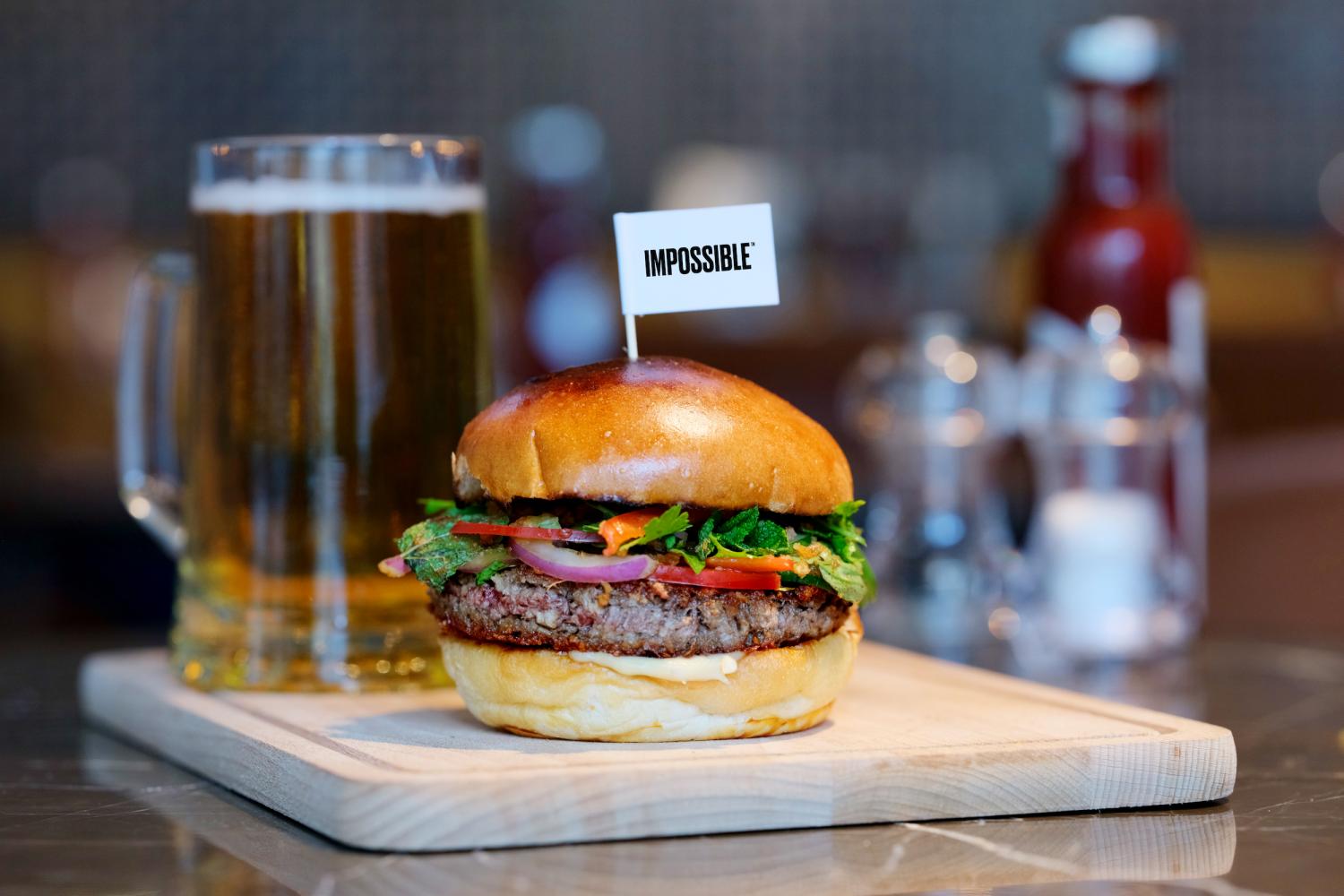
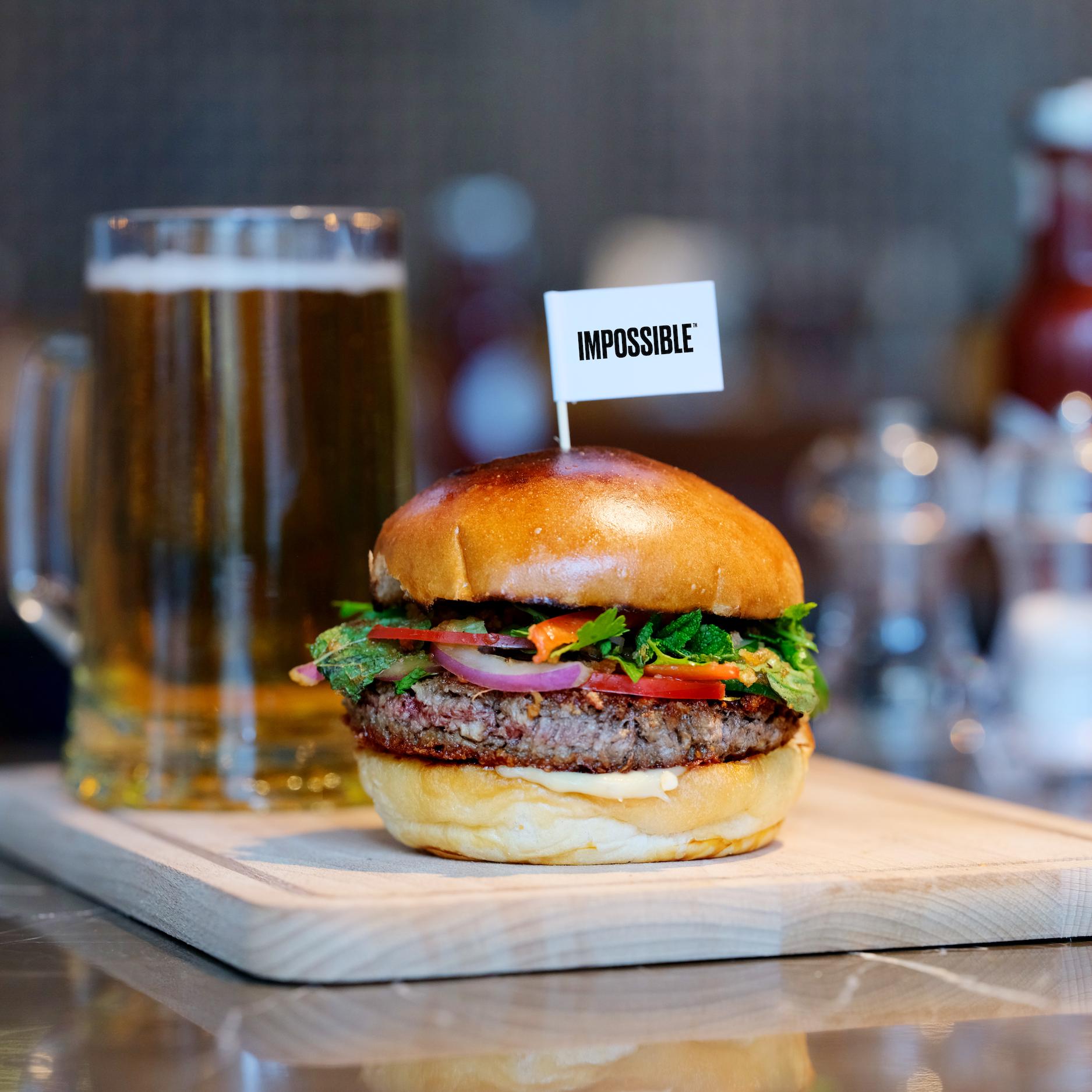
The plant-based food boom is disrupting all corners of the meat and dairy industry, reaching an estimated market value of more than $4.5 billion in 2019.
Notably, the key drivers of this trend aren't vegetarians or vegans, but curious omnivores looking for new ways to eat less meat. Research generally suggests that reduced meat consumption is optimal for both environmental and human health. Has the message finally sunk in, or is this just another food trend destined to go the way of Atkins and the cabbage soup diet?
Only time will tell. But with the segment set to top $6.5 billion in within five years, companies are vying for a slice of this additional market share with an impressive lineup of products set to launch in 2020. Here are a few standouts, coming soon to restaurants and grocery shelves near you.

Beyond Meat expands to more grocers, teases entry in the poultry space
After going public in one of the most headline-grabbing IPOs of 2019, analog protein purveyor Beyond Meat has big plans for the year ahead. Its plant-based meat lineup, which includes burgers, ground beef and sausage, is already available at more than 50,000 restaurants and grocery stores worldwide. Starting in 2020, over 4,000 Canadian grocers will start carrying Beyond Meat, as will new U.S. retail partners including Costco.
CEO Ethan Brown teased an entry into the poultry space in a December appearance on Bloomberg TV, while declining to name any "specific partners or developments.” It certainly wouldn't be a stretch: Beyond Meat first got noticed when its since-discontinued line of vegan chicken strips started flying off the shelves at Whole Foods, and the company partnered with KFC on a plant-based chicken test last year.
Beyond Meat is also said to be testing new pork substitutes, with news outlets including The Observer guessing a Beyond bacon product may be just around the corner.

Impossible Foods brings burgers to more grocery stores, parlays into pork
The still privately-owned Impossible Foods is playing catch-up in the grocery aisle but plans to narrow the gap in 2020. Compared to thousands of stores selling rival Beyond Meat, Impossible started its retail rollout last fall with only three partners: Wegmans in parts of the U.S. Northeast and South, Gelson’s Markets in Southern California and Fairway Market in New York City.
"We want to make sure we do this right," David Lee, Impossible's chief financial officer, told CNET. "So we're focusing on a smaller, high-quality retailer, just like we started with smaller restaurants." It's true: Impossible got its start at high-end restaurants like Jardinière and Momofuku Nishi before moving on to mainstream chains like Burger King and White Castle, so the approach has worked before.
Impossible plans to make its signature burgers available at grocers in every U.S. region by the middle of this year, reports CNBC. Meanwhile, the company valued at $5 billion showcased its newest product—Impossible Pork—at the Consumer Electronics Show in Las Vegas this month and just released an Impossible Sausage collaboration with Burger King.
Panera Bread wants half of its menu to be plant-based
Fast-casual restaurant chain Panera Bread rolled out a bevy of plant-based options in 2019—including grain bowls, the company's most successful launch for the past three or four years, CEO Niren Chaudhary told CNBC.
The company hopes to expand plant-based options from around 25 percent of its menu to 50 percent in the coming years, Chaudhary told the outlet, and customers can expect new plant-based options in every menu category by 2021. Unlike some other chains, representatives say Panera's new offerings will favor vegetables over meat substitutes.

Burger King to test Impossible Croissan’wich
A partnership with Impossible Foods created Burger King's best quarterly financial performance in four years. After selling millions of Impossible Whoppers in 2019, the company is looking to expand its plant-based roster even further.
The fast-food chain will test the Impossible Croissan’wich, a breakfast sandwich made with eggs, cheese and an Impossible Sausage patty, in five U.S. markets in early 2020. Customers in Savannah, Georgia; Albuquerque, New Mexico; Montgomery, Alabama; Lansing, Michigan; and Springfield, Illinois, will see the new sandwich pop up on Burger King menus later this month, reports The Chicago Tribune.
Good Catch brings more plant-based seafood to the grocery store
Pennsylvania-based startup Good Catch offers a solution to overfishing with a line of plant-based seafood made from beans like chickpea, lentil and fava—and it's getting noticed in a big way. The company has attracted more than $18 million in venture capital over the past three years, and its fish-free tuna was named the best new meat alternative at Expo East 2019. Grocery shoppers can expect new plant-based crab cakes and whitefish sliders from the company this year, reports the Today show.
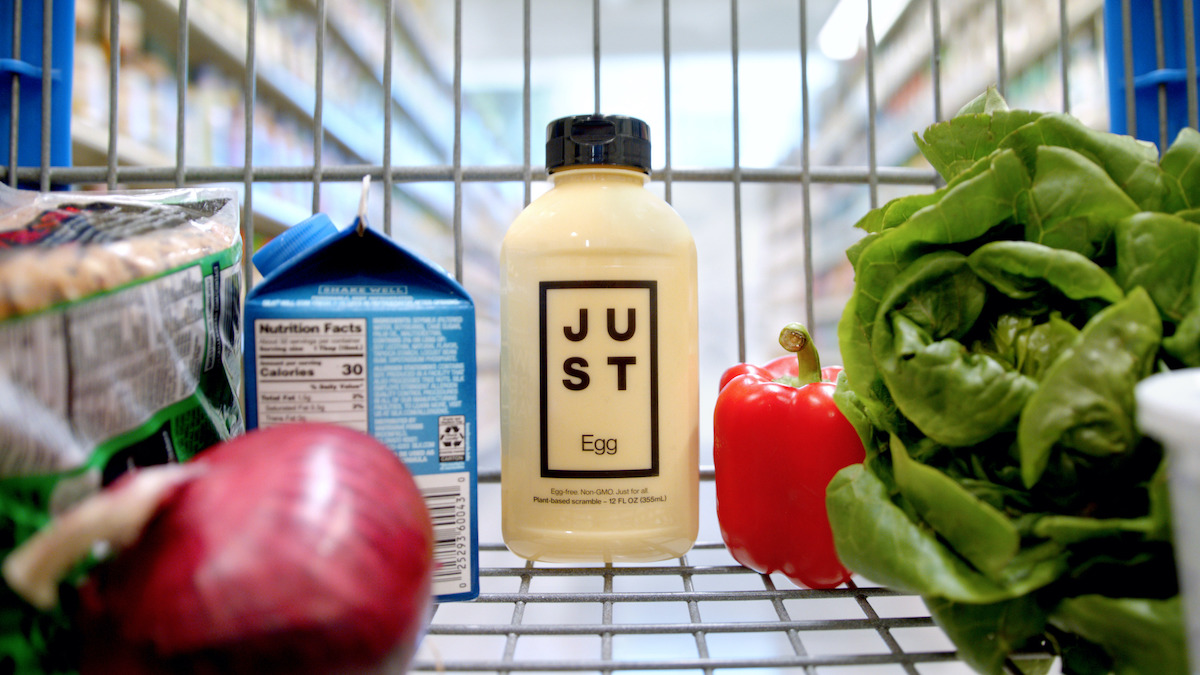
Just looks to increase production capacity tenfold
Just is no stranger to controversy. The company formerly known as Hampton Creek was once sued by Hellmann's for using the term "mayo" to describe an eggless substitute and investigated by Bloomberg for misleading investors.
Back with a new name and what it says is a new approach to governance, the company is pushing aggressive production expansion for its flagship product, Just Eggs. In December, the company told reporters its newly acquired plant in Appleton, Minnesota, can now produce enough protein for 1.5 million vegan eggs in only six days.
Just says it has already sold the equivalent of 17 million eggless eggs but hopes to increase production tenfold in 2020 while driving down costs.
Nando’s launches vegan 'Perinaise' in restaurants and grocers
South African chain Nando's is famous for its take on Portuguese classics like peri-peri style chicken. Operating more than 1,000 restaurants across 35 countries, the chain already offers several plant-based alternatives to its classic sandwiches and burgers. But until now, customers looking to avoid animal ingredients were advised to specify "no mayo" when ordering, as Nando's signature Perinaise (like most mayos) contains eggs.
Starting in January, Nando's-lovers can now enjoy plant-based favorites like the Sweet Potato and Butternut Pitta—mayo and all—thanks to a companywide roll-out of vegan Perinaise. Along with all Nando's restaurants, the plant-based peri-peri mayonnaise will hit the shelves at Tesco supermarkets in Asia and Europe.
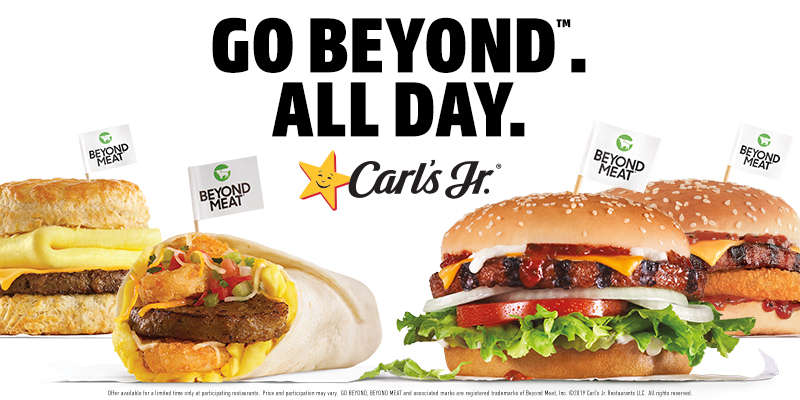
Hardee's and Carl's Junior put plant-based foods on the breakfast menu
Carl’s Junior debuted Beyond Meat's signature Beyond Burger at more than 1,000 locations across the U.S. in 2019—and has since sold over 6.5 million of them, making it the chain's most successful new product launch over the past two years.
In 2020, the Beyond Meat partnership will extend to Carl's sister restaurant, Hardee's, and move on to the breakfast menu. With all-day options like breakfast burritos and biscuit sandwiches featuring plant-based Beyond Sausage alongside eggs and hash browns, the quick-serve chains are going all-in on the alt-meat trend.
Whole Foods adds plant-based egg sandwiches to the hot bar
This month, Whole Foods introduced breakfast sandwiches featuring Just-branded vegan eggs in the hot bar section at 63 stores in Hawaii, Arizona, Southern California and Las Vegas. This isn't the grocer's first foray into the plant-based breakfast game, having piloted breakfast sandwiches made with the EatGUD vegan egg patty in 2018, reports Vegan News Now.

McDonald's courts partners for plant-based burger roll-out
After receiving criticism for arriving late to the plant-based burger party, McDonald's debuted its first alt-meat option in September. Introduced in Canada, the PLT (or plant, lettuce and tomato) sandwich features a Beyond Meat patty made exclusively for McDonald's.
The fast-food giant entertained offers from multiple companies—including Beyond Meat and rival Impossible Foods—while teasing a wider rollout. Earlier this month, Impossible dropped out of the running, saying its production capacity isn't ready to meet McDonald's demands. The news sent Beyond Meat stocks soaring, but news reports indicate McDonald's is unlikely to choose just one plant-based protein provider for a nationwide rollout in the U.S.
For now, the Beyond Meat PLT will head to 52 new restaurants across Southwestern Ontario for a 12-week pilot, reports Business Insider.
KFC tests plant-based chicken sandwich in the U.K.
The Zero Chicken sandwich features a plant-based patty from U.K. analog meat purveyor Quorn, seasoned with KFC's famed 11 herbs and spices. The sandwich arrived at the chain's 900 U.K. locations on January 6 and may extend to other markets—including the U.S.—if it performs well, Quartz reports.
Meanwhile, fellow Yum! Brands chain Taco Bell will roll out the Oatrageous Taco, featuring a vegan ground beef alternative made from oats, across Europe after successful pilots in Finland and Spain.

Dairy-free Horchata heads up the winter drink menu at Peet’s Coffee
The Horchata is a tasty winter beverage dating back nearly 1,000 years, with almost all varieties using a type of plant-based milk combined with sweetener and spices. Peet's Coffee introduced a twist on the classic for its 2020 winter drink menu, replacing rice or nut milk with the increasingly popular oat and adding pulled espresso, ground cinnamon and Madagascar vanilla.
Daring Foods plant-based chicken is coming to the U.S.
U.K. startup Daring Foods refers to its signature product as "the opposite of chicken." Made from five non-genetically modified ingredients—water, soy, sunflower oil, salt and spices—this is a vegan meat "that's actually healthy," co-founder and CEO Ross Mackay told TechCrunch.
Last month, the company linked up with foodservice supplier Rastelli Foods Group to enter the U.S. market. In exchange for a $10 million investment in Daring Foods, Rastelli will retain exclusive rights to sell the company's products to restaurants and retailers, The Spoon reports. Daring will relocate its headquarters to New York, and its vegan chicken will roll out nationwide beginning in February.
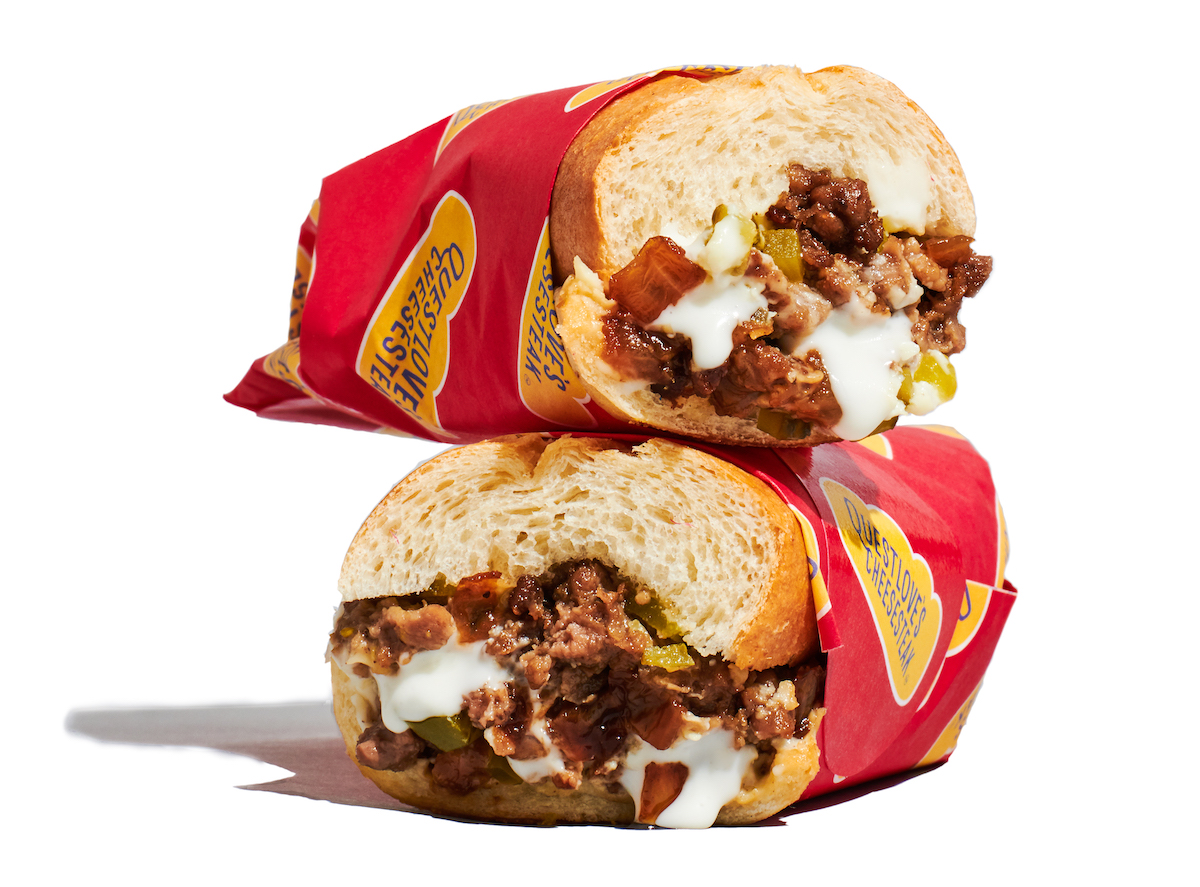
Questlove's vegan cheesesteak comes to New York fast-casual chain Fresh&Co.
Philadelphia-born Questlove, drummer for The Roots, launched his own vegan cheesesteak last year. Made from Impossible-brand meat, the sandwich debuted at Philadelphia Phillies home games during the 2019 season, along with 40 Live Nation venues across North America.
In 2020, Questlove’s Cheesesteak will appear alongside half a dozen new plant-based offerings at fast casual farm-to-table restaurant chain Fresh&Co. Bringing a touch of Philly to New York, the sandwich is served with Impossible meat, cheese sauce and banana pepper relish on an Amoroso’s Roll. Click here to check out other plant-based options on Fresh&Co.'s menu.
Aldi rolls out house-branded vegan ice cream bars
Vegan Food U.K. recently spotted house-branded vegan ice cream bars at supermarket chain Aldi. The plant-based food news outlet posted a photo on Instagram to much fanfare, with users comparing the almond and dark chocolate treats to those sold by cult favorite Magnum Ice Cream.

Starbucks adds new plant-based drinks to the permanent menu
The first new Starbucks drinks of the decade feature plant-based dairy alternatives, the coffee giant recently announced on its blog. The Almondmilk Honey Flat White (pictured above) and Coconutmilk Latte are now available at all stores in the U.S. and Canada. The company also introduced oat milk at 1,300 stores in the Midwest and showcased the non-dairy option with a new latte.
Fatburger brings vegan milkshake to more locations
California-based Fatburger linked up with Craig’s Vegan Ice Cream to offer plant-based vanilla and strawberry milkshakes at a dozen Los Angeles locations in October 2019. The fast-casual chain will roll out the vegan shakes to 50 additional locations in Southern California and Las Vegas in 2020, adding to its existing vegan menu options like the plant-based Impossible Burger and dairy-free cheddar cheese.
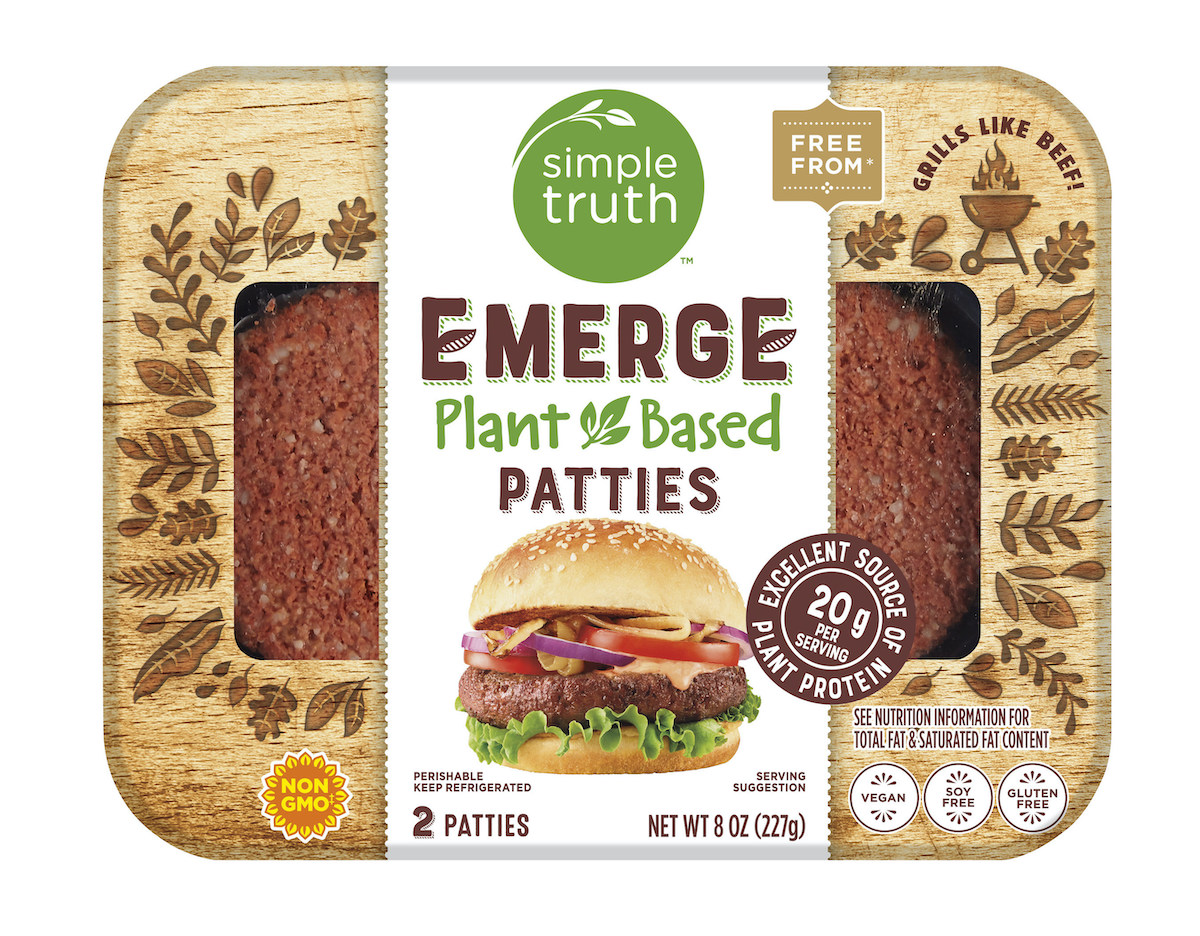
Kroger to add 50 new products to its plant-based house brand
Grocery chain Kroger enjoyed early sales success from its organic and health-focused house brand, Simple Truth, and last year launched a spinoff for plant-based foods. The aptly named Simple Truth Plant Based already features an impressive lineup of products, from analog meats to vegan chocolate chip cookie dough and dairy-free sour cream.
Kroger plans to launch 50 new products under the label in 2020—including fresh vegan burgers and ground beef substitutes made from pea protein, which hit store shelves this month at prices far below brands like Beyond Meat.
U.K. chain Frankie & Benny's introduces vegan menu
Italian-American restaurant chain Frankie & Benny's—which has more than 200 locations across the U.K.—is doubling down on vegan offerings with a standalone menu. Replete with plant-based takes on Italian classics like meatballs, calzones and pizza margherita, the new menu rolled out across all Frankie & Benny's locations on January 2, bringing the chain's already impressive list of vegan offerings up to 30.
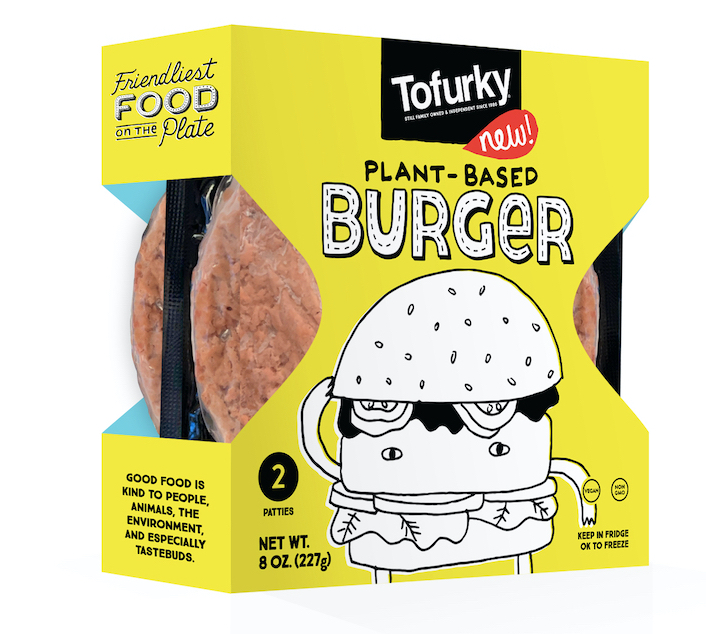
Vegan veteran Tofurky gets into the plant-based burger game
Tofurky sold plant-based meat long before it was cool—and the brand has come a long way since its namesake Thanksgiving dinner substitute hit store shelves in 1995. Tofurky's lineup now includes plant-based chicken, deli slices, sausages and a tempeh ingredient for use in cooking, among other products.
In 2020, it will add a plant-based burger to that list. Made from a "combination of soy protein, vegetable protein and wheat gluten," the burger will debut at more than 600 Target locations across the U.S. in January.
*All images courtesy of respective brands and intended for press use only